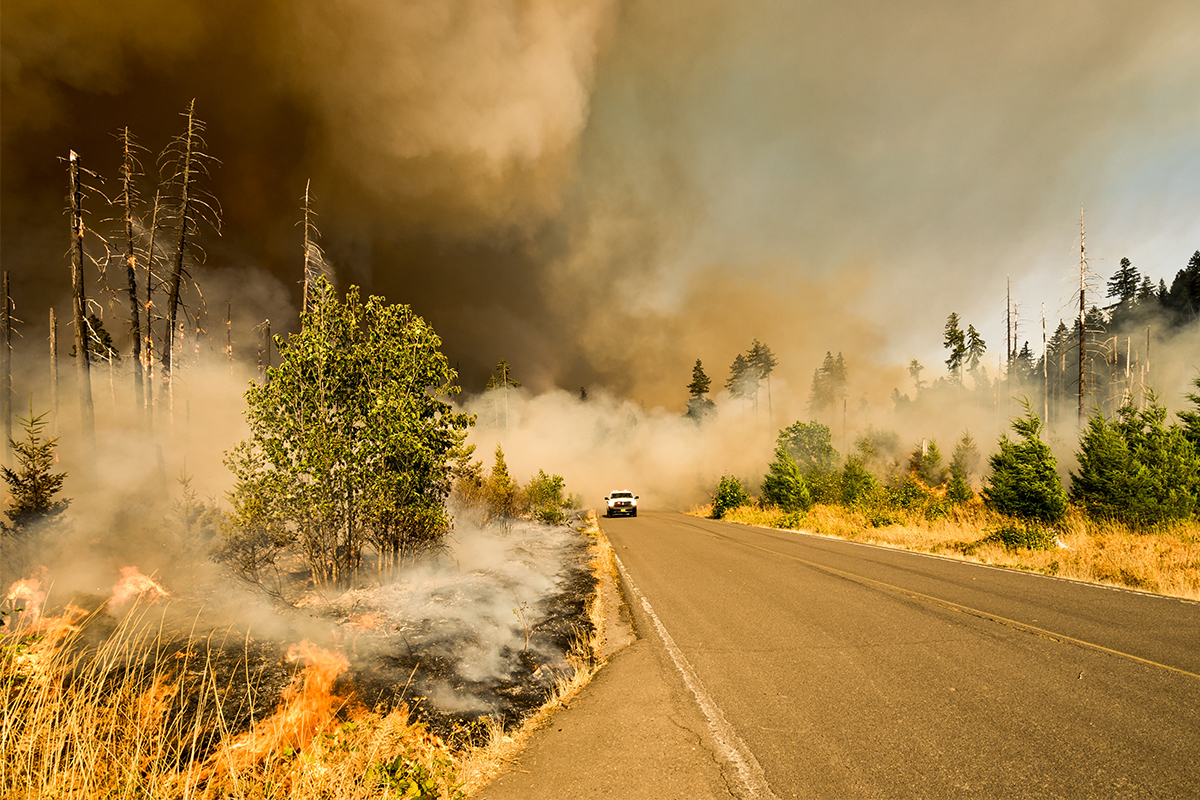That inchoate sense that California wildfires are worse than ever? It’s not your imagination — or a by-product of disaster-centric media coverage. They are worse, in physical scope, damages and death tolls.
The October 2017 firestorm known as the Wine Country Fires killed nearly four dozen people and obliterated the Coffey Park neighborhood in Santa Rosa. Last November, the Camp Fire in Butte County was even worse, killing 86 people and destroying nearly 19,000 structures, most of them homes.
Whether you blame climate change or population shifts, utility companies or bad luck, one thing is clear: a drier, hotter environment requires new thinking, and some difficult questions. Does your Napa Valley wedding spot have an evacuation plan? Is an autumn getaway in the mountains worth the risk? For the answers, we went straight to the experts: Dr. Tom Scott and Area Fire Advisor Lenya Quinn-Davidson of the University of California Cooperative Extension.
If you live in an area at risk for wildfires, where should your focus be?
Dr. Tom Scott: Certainly hardening your house. Look for leaves, burnable materials on the roof, material stacked up against the side of the house. I’m as guilty as anyone else — there’s always something better to do than get up on your roof and sweep off the pine needles. What you have to imagine is a fairly large piece of burning material dropping onto your house or next to the walls. Do you have a jute doormat? That’s an opportunity for an ember to fall on a burnable piece of material. Otherwise, the ember will just burn itself out.
In this community [Coffey Park] in Santa Rosa, those houses were all five feet apart. It was really an urban fire with a wildland fuse. The reality is that houses burn down because of embers, and a lot of embers come from the house next door, so it’s a community project. The first focus really isn’t on how much rain we’ve had or haven’t had in the wildlands — it’s how much dead, standing biomass you have around your house, and how much your neighbors have around their houses.
Is there a reliable resource for predicting the severity of the wildfire season?
Lenya Quinn-Davidson: NIFC [National Interagency Fire Center] puts out Wildland Fire Potential Outlooks every month, and those are helpful for understanding predicted fire danger at a seasonal scale. As you can see on their recent outlooks, California is predicted to have above-normal fire potential through the end of October, and southern California is predicted to have above-normal fire potential through the end of the year.
Actual fire potential will depend on precipitation patterns, and in the North Coast of California, where I am, it’s been consistently wet for about a month. However, if we get a month or so without rain, especially with dry winds from the east, fire season could open back up.
What if you’re just visiting somewhere — how would you know if there’s trouble late at night? Is there a tsunami-like alert system?
Quinn-Davidson: There isn’t a siren-style warning system, though that’s definitely in discussion in many communities. It’s important to pay attention to “red flag warnings,” which can help us understand when the conditions are ripe for severe fire. The fires in Napa and Sonoma in 2017 happened during red flag warnings — dry conditions with unusually high winds — so we had some forewarning that things could get bad. Those really severe, fast-moving fires are generally going to happen during red flag conditions, so it helps to pay attention when you hear those warnings.
What do you do when it’s two in the morning and there’s trouble?
Scott: When the high winds come at two in the morning, that’s a pretty difficult model to plan for evacuation. Some of these things we just have to accept. Maybe you won’t get a warning. I think we’re learning to live with that model, rather than a model where you imagine that you’re going to be saved by society. In the east, people pay attention to windchill and temperature and might make a decision not to drive on an icy highway. In California, we need to pay attention to the weather in the same way.
Say I’m going to a wedding in Napa. What are some things I need to ask myself before there’s a problem?
Scott: Know your exits. I always say, “Is there any way to get out of here?” And then monitor the climate; these winds do not come up unpredicted. Know your escape routes, and know the weather. And then, if you’re at a wedding where there are a whole bunch of cars and only one way to get out of there, and the wind starts to come up, I’d start to say there’s a very small chance that a fire would start. If you don’t have to be there, maybe it’s time to call it a day.
What should I ask about or look for when I rent a cabin for the weekend?
Scott: Look at the vegetation. If you’re in a place that hasn’t burned for 100 years and the chaparral is really dense, I probably wouldn’t rent that house in August through the end of November.
If someone rents on Airbnb or VRBO and asks the [homeowner], “What’s the fire plan for escaping this house? What are the escape routes? How do I find out about the [local] weather? What’s the current threat related to the vegetation? How long has it been since this area last burned? What’s the community’s evacuation plan?” Those are all reasonable questions. I bet most homeowners don’t know this stuff, but they’ll find out in a heartbeat if it affects their rent.
These interviews, conducted separately, were condensed for clarity.
This article was featured in the InsideHook SF newsletter. Sign up now for more from the Bay Area.



















